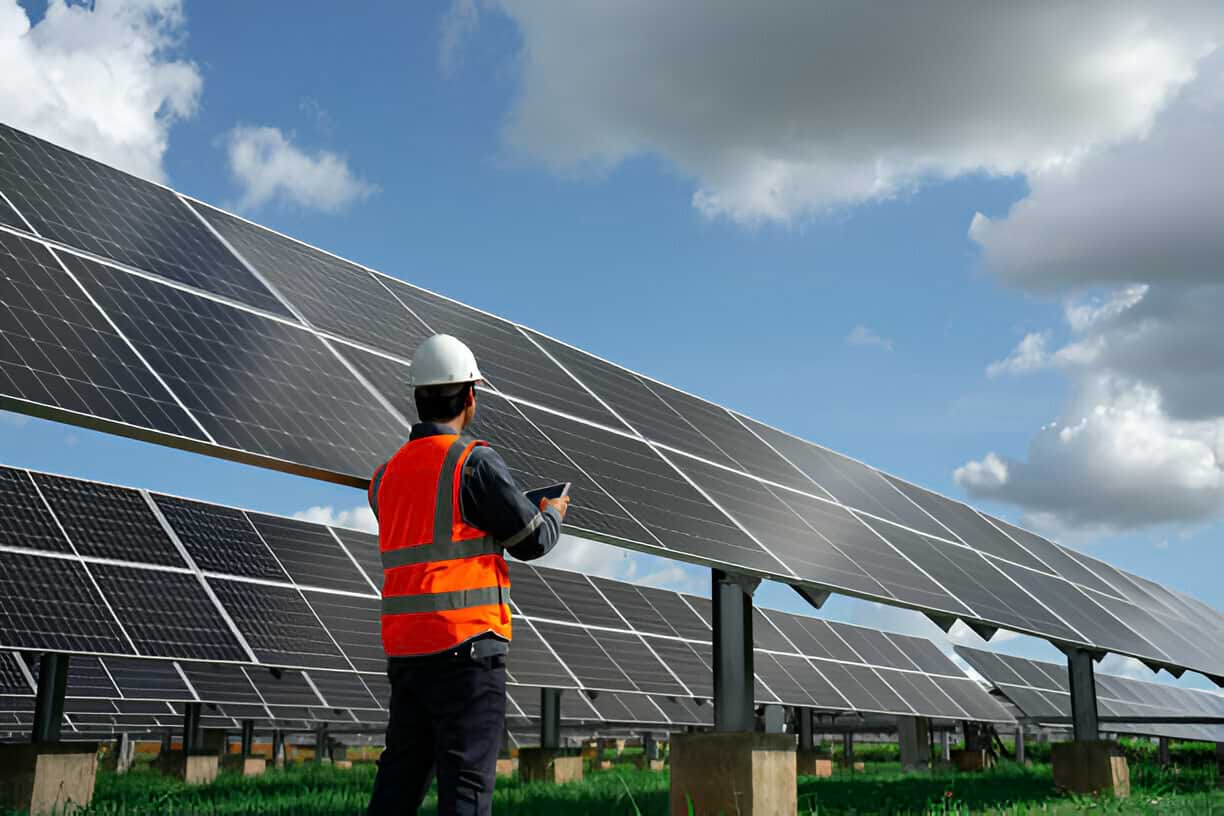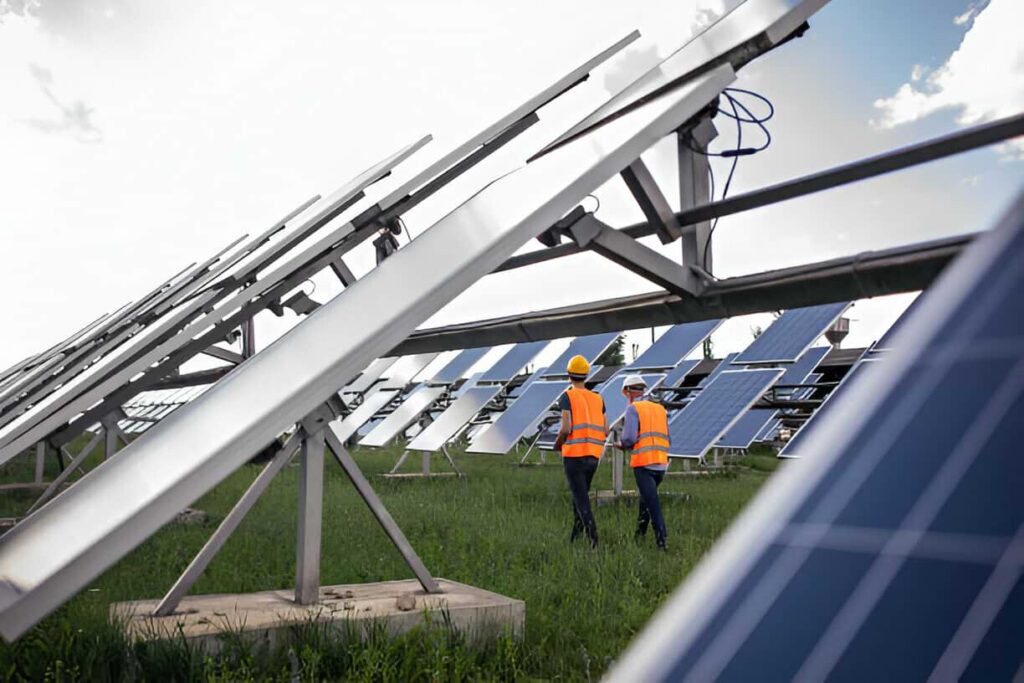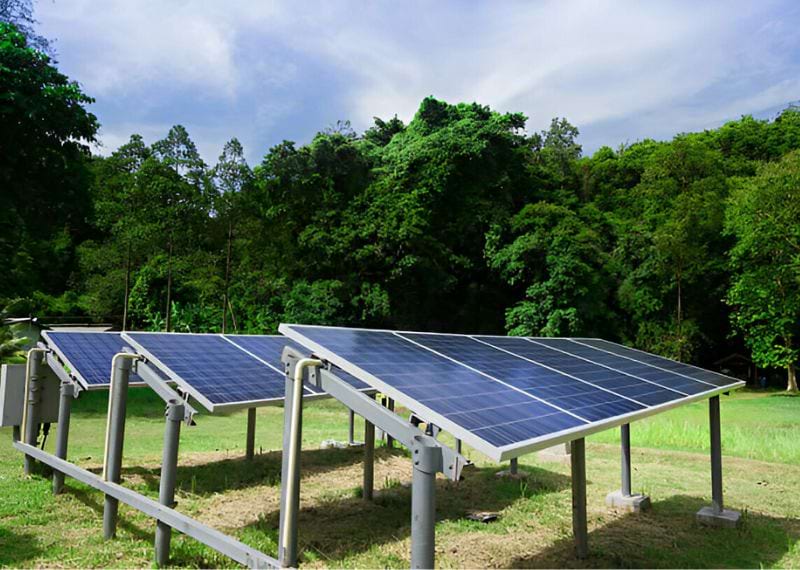The Growth and Benefits of Ground-Mounted Solar Systems in Sydney, NSW
Ground-mounted solar systems are solar power generation systems where the panels are installed on the ground instead of the roof. These systems typically require metal or concrete structures to support the panels at the proper angle to gather sunlight. Here are some important points to consider about ground-mounted solar systems.

Types of Ground PV Systems
Ground-mounted PV (photovoltaic) systems come in various types, each with distinct characteristics tailored to specific applications and environments. Here are the main types:

- Standard Fixed-Tilt Ground-Mounts: A specific angle is fixed for the structures mounting solar panels on these systems. These systems have solar panels mounted on a structure fixed to a particular angle
. It is best for areas with a predictable and consistent angle of sunlight. Standard fixed-tilt ground mounts are characterized by simplicity, low installation, and low maintenance costs.
- Adjustable Tilt Ground-Mounts: This system is similar to fixed-tilt but allows for manual panel adjustment—flexibility to adjust angles seasonally to maximize energy production. It is best suited for seasonal variations in sunlight, location, and region.
- Single-axis tracking systems use motors and control systems to follow the sun’s path from east to west throughout the day. Increased energy production compared to fixed-tilt systems. This system is best for wide-open spaces and high direct sunlight.
4. Dual-axis tracking systems: Dual – axis tracking systems track the sun’s movement both horizontally and vertically. Maximum energy production by maintaining the optimal angle to the sun throughout the day and year. This system is best for locations with high solar irradiance and available space, but they are more complex and expensive.
5. Pole-Mounted Systems: Pole-mounted systems are mounted on poles and driven into the ground. This system can be installed in various terrain types and often has the option to include tracking mechanisms. Rural or open areas with varied terrain are suitable for this system.
6. Ballasted Ground-Mounts: These systems use heavy bases (ballasts) to hold the solar panels in place, rather than anchoring them to the ground. Easy installation on surfaces where ground penetration is not feasible, like landfills or brownfields. Sites with soil issues or environmental concerns. A ballasted ground-mount system is the best option for sites with soil issues or environmental concerns.
7. Canopy Systems: Solar panels are mounted above ground level, often over parking lots or other open spaces. Dual use of land, providing shade and solar energy simultaneously. Canopy systems are best for where solar systems require dual-use, such as parking lots, agricultural areas, or other places.

Each type of ground-mounted PV system provides distinct advantages and is appropriate for a variety of applications, from residential to large-scale solar farms. Available land, budget, energy requirements, and local solar conditions determine the system choice.
Benefits of Ground Solar Mounting System:
In several ways, ground-mounted solar energy systems can provide benefits to Sydney residents:
1. Increased energy output:
You can optimally orient and tilt ground-mounted systems to capture the most sunlight, resulting in higher energy output than some roof-mounted systems.
2. Space Efficiency:
These methods use open land that would otherwise go unused, leaving roof space for other uses.
3. Scalability:
Ground-mounted systems are easily expandable to meet rising energy demands, making them appropriate for both residential and commercial properties.
4. Installation and Maintenance:
Ground-mounted systems are generally easier to install and maintain compared to roof-mounted systems. They provide easy access to cleaning and repairs, which can be advantageous.
5. Environmental Impact:
Solar energy reduces fossil fuel dependency, lowering greenhouse gas emissions and promoting a cleaner, more sustainable world.
Additional Advantages:
- Energy Independence:
Installing a ground-mounted solar system can lessen reliance on the grid, increase energy security, and perhaps lowering power bills.
- Financial Incentives:
Sydney homeowners can benefit from a variety of government incentives and rebates for solar installations, which can help offset the initial expenses and make the investment more affordable.
- Property value increase:
Homes with solar energy systems often see property values rise, which makes them an attractive long-term investment.
- Reduction in the Urban Heat Island Effect:
Ground-mounted systems can help alleviate the urban heat island effect by lowering the amount of rooftop space required for solar panels.
Is the ground-mounted solar system suitable for Sydney?
Whether a ground-mounted solar system is suitable for Sydney depends on a number of factors and whether all the equipment is available in Sydney, which are discussed below.
- Sunlight Availability:
Solar energy generation is ideal in Sydney due to its receipt of sufficient sunlight throughout the year. Ground-mounted systems can be positioned and inclined to maximize sunlight capture, increasing their efficiency.
- Space Requirements:
Ground-mounted solar systems require a large quantity of land. If you have enough open areas in your home, such as a large yard or unused land, this type of system might be suitable. Rooftop systems may be more practicable in urban locations with limited space.
- Local Regulations:
Ground-mounted solar are permitted by the Local regulations and zoning laws in Sydney. Any specific guidelines or restrictions should be followed.
- Installation Cost:
Although the systems offer higher efficiency and scalability, they may be more expensive initially due to mounting structure and land preparation costs. For cost minimization, the government announced an incentive for Sydney residents.
Conclusion:
In conclusion, a ground-mounted solar system in Sydney can be a viable and successful alternative for solar energy generation, provided you have enough space and follow local restrictions. The city’s favorable sunlight circumstances make it an appropriate location for such projects.
FAQ:
A ground-mounted solar panel has a life expectancy of 25 to 30 years, but it can last more years if well maintained.
The quantity of land required is estimated depending on the size of the system. Essentially, one requires around 4-5 acres of land to develop one megawatt of solar power.
These systems may be more effective because they are installed on the ground; cooling is improved and the orientation and tracking of the panels can be better adapted.
Yes, but one major constraint that may need to be factored into engineering and design is stability and efficiency.
The cost depends on the size and racking of the solar system. A 10 KW solar system for your home or business costs between $6,000 and $9,000 for a ground-mounted system. The cost may increase due to the additional expense of digging or adding a racking system.
Discover how solar energy can benefit your home or business—request a quote today and take the first step toward a greener tomorrow.
Get a Quote